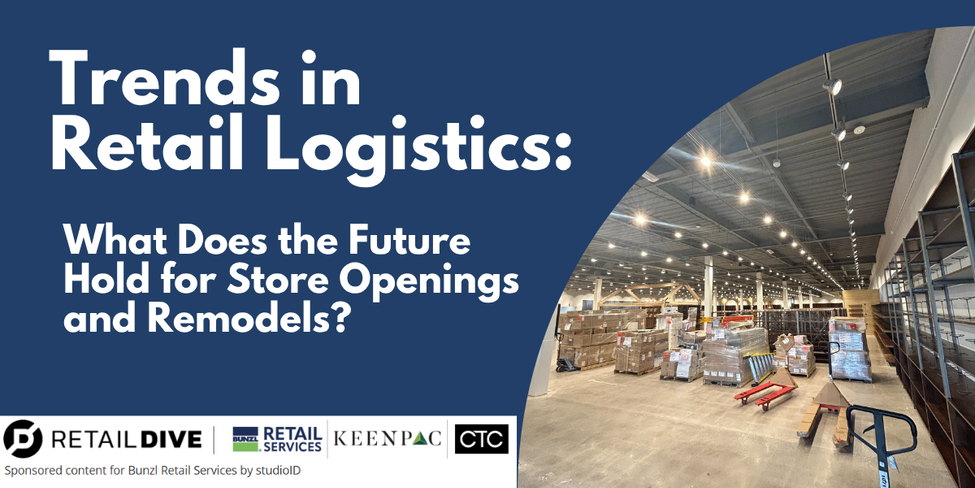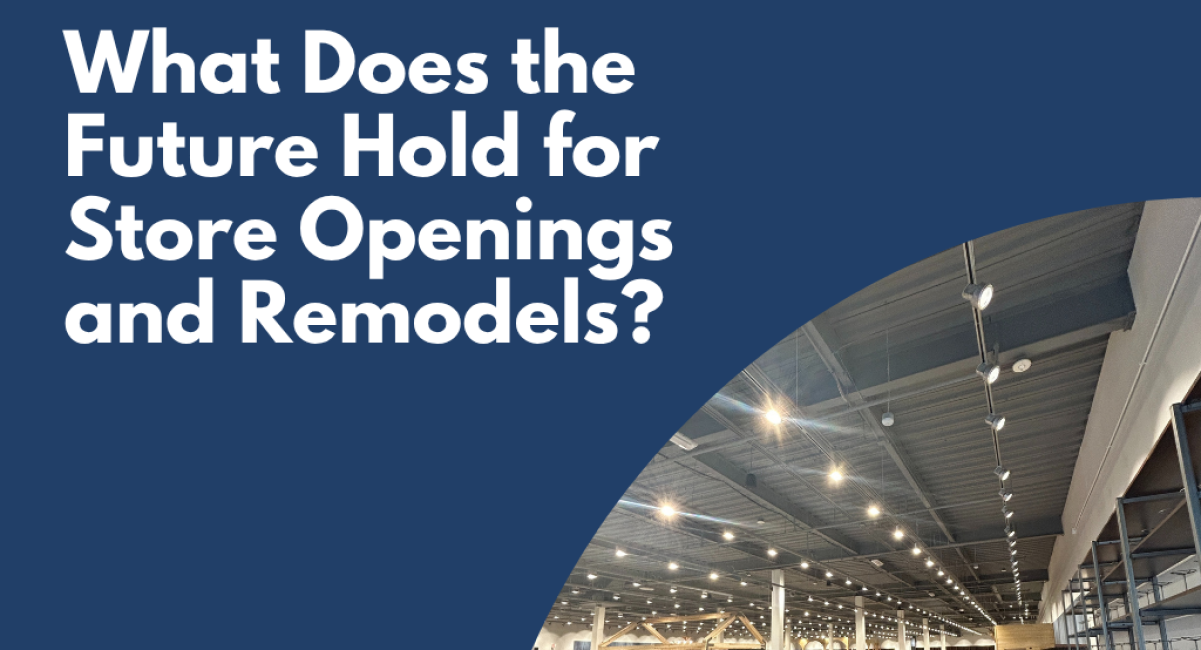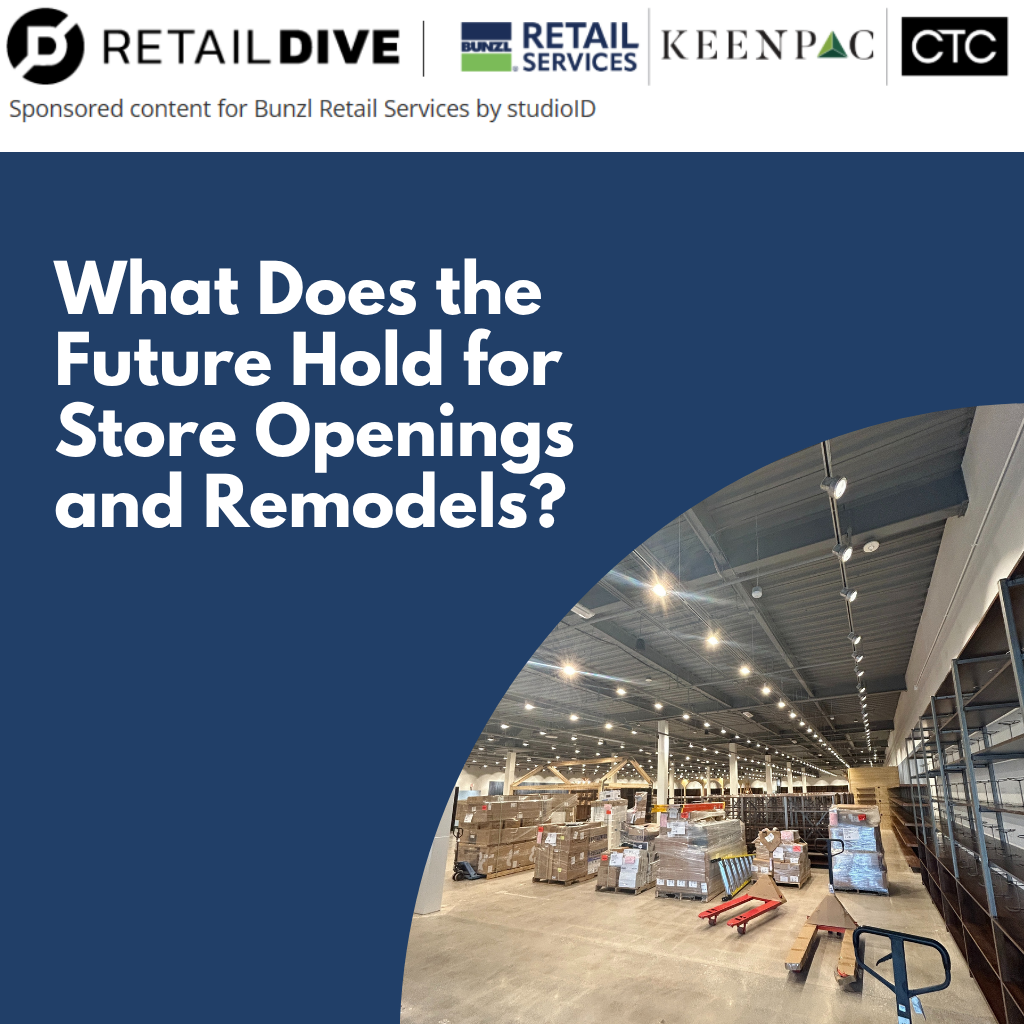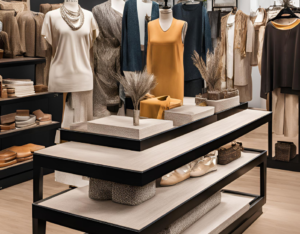What the Future Holds for Store Openings and Remodels

In a retail environment shaped by evolving consumer expectations, supply chain pressures, and rapid technological change, store openings and remodels are more complex—and more critical—than ever.
To unpack what successful retailers are doing today (and what’s coming next), Bunzl Retail Services recently joined forces with Retail Dive and Studio ID to host a panel discussion featuring three retail leaders:
Marie Hurst, VP of Operations and Logistics, Bunzl Retail Services
Mike Orehowsky, Director, West Monroe Partners
Randy Rokosz, Senior Director of Purchasing and Facilities, Boot Barn
Here are the key takeaways from that conversation.
Retail Success Still Hinges on Execution
Our panelists agreed: while technology, sustainability, and evolving customer expectations are transforming retail, execution remains foundational. As Marie Hurst put it, “Retail success still comes down to the basics: clear communication, tight project management, and ensuring alignment between corporate and store teams.”
Randy Rokosz added that logistics must be seen as a strategic advantage. “You can’t just keep using the same playbook. The best retailers deconstruct and reconstruct their processes regularly.”
Project Management Is Make-or-Break
When it comes to opening a new location or remodeling an existing one, timelines are everything. And that means bringing the right people to the table early—operations, merchandising, construction, transportation, and procurement must all be aligned.
Contingency planning is also essential. “There will always be late trucks and unexpected delays,” said Mike Orehowsky. “You need to know what the escalation plan is before issues arise.”
Strong vendor relationships and a clear RFP process can also help reduce timelines and increase efficiency. Randy emphasized the importance of constant collaboration: “Know your vendors, and meet with them regularly to review store programs and timelines.”
Technology Must Serve People—Not the Other Way Around
While technology is revolutionizing everything from inventory management to customer engagement, our panelists warned against adopting tools for their own sake.
“The smartest retailers aren’t just adding more tech—they’re using it to make life easier for store teams and improve the customer experience,” said Mike.
Marie pointed out that the best technology investments are backed by a clear business case. Whether it’s automating pick-and-pack operations or upgrading ordering systems, retailers should ask: Will this impact multiple parts of the business in a meaningful way?
Randy stressed visibility as a key driver: “If your vendors can’t offer platform-based insights into inventory or shipments, make sure you build in regular communication touchpoints.”
Blending Online and In-Store Experiences
Retail is no longer a binary of physical vs. digital. Today’s customers expect a seamless experience, whether they’re browsing a store or ordering from an app.
Boot Barn’s mobile app, for instance, uses location-based technology to send personalized offers when customers are near a store—encouraging visits and boosting conversions.
But customer convenience must be matched by operational ease. Mike emphasized staging products near pickup points and investing in employee training to support click-and-collect workflows. As Marie put it, “Even with automation, you’re still depending on people to deliver a great customer experience.”
Embedding Sustainability into Retail Projects
Sustainability is moving from a “nice to have” to a necessity in retail strategy—but that doesn’t mean it has to be costly.
Marie outlined several practical strategies: optimizing freight zones, using recycled shipping materials, and refurbishing fixtures during remodels. Randy added that even utilities and lighting can be rethought from a sustainability lens, balancing cost with the in-store experience.
Mike noted that planning plays a critical role: “From siting new stores to choosing refrigeration systems, early decisions have a lasting impact on energy use and carbon footprint.”
Flexible, Resilient Supply Chains Are a Must
Supply chains have been reshaped by disruptions, tariffs, demographic shifts, and regulation changes. Our panel agreed: flexibility is no longer optional.
“You have to monitor shifts in demographics, like migration from fire- or hurricane-prone regions, and factor that into sourcing and distribution strategies,” Marie said. She also pointed out how new chemical regulations (e.g., PFAS bans) are changing what can even be stocked.
Randy stressed proactive risk mitigation: “Talk with vendors regularly. Make sure they have contingency plans and that your supply isn’t overly dependent on one region.”
What Does the Future Hold?
As the session wrapped up, each speaker shared their outlook:
Marie Hurst: “Retailers must balance innovation with fundamentals. New tech and sustainability are important, but execution remains the key.”
Mike Orehowsky: “Tech like automation and AI will transform store openings—but only if it solves real problems.”
Randy Rokosz: “Retailers that reassess and improve continuously—not just follow the old playbook—will lead the way.”
Final Thoughts
Retail logistics is evolving fast, but the core truth remains: successful store openings and remodels depend on smart planning, strong partnerships, and the ability to adapt. At Bunzl Retail Services, we work closely with our partners to streamline every stage of the store development process—from supply chain support to on-the-ground execution—so you can open on time, on budget, and on trend.
Want to learn more about how we help leading retailers stay ahead of the curve? Contact us today.






